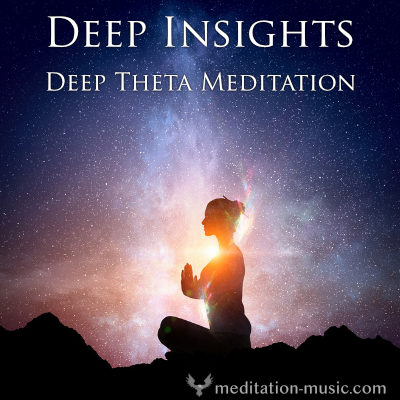Types and Spiritual Traditions of Meditation
Meditation is becoming increasingly popular. It’s no longer restricted to spiritual practitioners, but instead is used by everyone from athletes to artists to prisoners. As meditation grows in popularity, it can become harder and harder to understand what exactly it entails: there are so many traditions, variations and techniques that it’s hard to generalize it all with just one word. Meditation has a rich and storied history, and it is now practiced in many different forms.
Meditation throughout history

In the Western society, many popular forms of meditation are based on Eastern forms of spirituality, including Buddhism, yoga and Hinduism. However, meditation has never been restricted to the East. Meditation is also an important part of other religions, including Christianity, Kabbalah and Islam. Different religions employ many different types of meditation with different goals and techniques.
What do all meditation practices have in common? They all exercise the mind. They train the mind to become focused, clear, calm and patient. They discourage attachment to negative or unnecessary thoughts and distractions. Likewise, they develop a connection to what is considered essential, whether that be a spiritual figure or a sense of grounding in the present moment.
Meditation has been practiced continuously for thousands of years, and meditators have even assumed the same posture for much of that time: legs crossed on the floor, with palms resting upright.
Indian religions and spiritual practices are among the most ancient — they have been practiced since long before the Common Era. Buddhism originally began as a branch of ancient Indian religion, and it prioritizes meditation as one of the central practices of spiritual life.
Practices such as prayer and counting rosary beads can also be a form of meditation: they are a chance for people to focus their attention and quiet the mind. Repetitive prayers, or mantras, are also used in religious traditions both Eastern and Western.
Scientific research is only just beginning to scratch the surface of understanding this ancient practice, and in fact, it’s not the type of thing that easily lends itself to scientific understanding. The mental, physical and spiritual effects of meditation are designed to be directly experienced by each person rather than intellectually described. However, there’s no doubt that meditation benefits the mind and body.
Meditation Types and Traditions
Meditation has always been in practice worldwide, but in the past century Eastern forms of meditation have experienced a great boost in popularity in the West.
Eastern spirituality first became popular in the West during the era of transcendentalism in the 19th century. There was another surge in popularity during the 1950s and 1960s, an era of visionary ideas. Popular poets such as Allen Ginsberg, Gary Snyder and Jack Kerouac incorporated Eastern religions such as Zen Buddhism into their literature, and this further popularized meditation for a wider audience. The boom in meditation that we see today can be traced back to this time.
New techniques of meditation have evolved from this cross-cultural exchange, and there are a few modern forms of meditation popular today.
Most popular types of meditation
In the West, meditation is often divided into two main types: focused meditation and mindfulness meditation. Each of the many meditation techniques can be divided into these two basic types, depending on whether they require focused attention on one specific object (such as the breath, an image, or a sound), or simply require an open awareness and observation of whatever passes through the mind.
Some of the most common forms of meditation currently practiced in the West include mindfulness, transcendental meditation, breath awareness, Yoga (including Kundalini), Zen, focused meditation, and insight (Vipassana) meditation. Some of these are rooted in spiritual tradition while others are secular, but most are practiced by a variety of people of differing religious inclinations.
Secular forms of meditation
Mindfulness meditation, breath awareness meditation and focused meditation are all secular methods: they do not involve any mention of spiritual figures, deities, or religious texts.
Mindfulness meditation is simple. It increases non-judgmental awareness of your thoughts, feelings and senses in order to reduce anxiety and improve mood. Mindfulness meditation is used in a therapeutic technique called Mindfulness-Based Stress Reduction (MSBR), which is designed to alleviate stress. This technique can even help chronic pain and illness. Mindfulness and MSBR are both derived from a combination of Eastern spiritual traditions as well as modern scientific and psychological research.
Focused meditation, too, can be traced back to spiritual forms of meditation that involve focusing your attention on one object. This object can be anything, which is why this practice easily lends itself to secularity. In religious meditation it might be a set of prayer beads, a chant, a certain deity or a religious principle. Others choose to focus on a candle, music, or an object in nature.
Breath awareness meditation is, in a sense, a type of focused meditation: it involves returning your attention to the breath over and over. This is a foundational technique used by many meditation traditions, but it’s also quite powerful when used on its own.
Buddhist traditions
Zen meditation and Vipassana meditation are two popular examples of Buddhist meditation techniques.
Zen meditation comes from Zen Buddhism, a tradition common in Japan and China. It is perhaps the most popular form of Buddhist meditation practiced in the West, but it is just one of many. Zen meditation emphasizes an open-ended awareness of whatever passes through the mind, often using the breath as an anchor. Zen Buddhists believe that calm meditation is the main path to enlightenment.
Vipassana meditation is an integral part of Theravada Buddhism, which is common in Southeast Asia. Like Zen meditation, it uses awareness of the breath as a foundational technique. However, it has a different goal. Zen meditation aims to eventually achieve “no-mind,” a state of total non-attachment and equanimity. Vipassana meditation aims to achieve insight into the true nature of reality.
Yoga and Hinduism
Yoga and Hinduism are both Indian spiritual traditions, and they are closely connected to one another. Some of the most popular Western meditation methods based on these traditions are actually quite modern, but they are all rooted in millennia-old practices.
Yoga meditation can take many different forms, and these meditations are often used to prepare the mind to do physical yoga sequences. Both physical yoga and yoga meditation are part of a set of practices designed to allow the soul to realize its true pure and infinite nature.
Kundalini and transcendental meditation are two modern types of meditation derived from yoga. Both involve focusing your attention on specific mantras or chants. Kundalini meditation also involves concentrating on certain parts of the body. This technique is purported to awaken vital energy in the body, leading to a variety of physical benefits in addition to mental clarity.
Other common forms of meditation are derived from specific Hindu traditions such as Vedanta. Deepak Chopra is one well-known practitioner of Vedanta, which uses a type of yoga meditation called “raja yoga” to train the mind.




